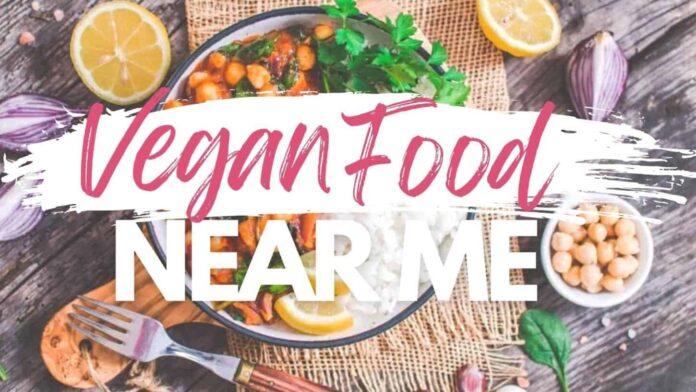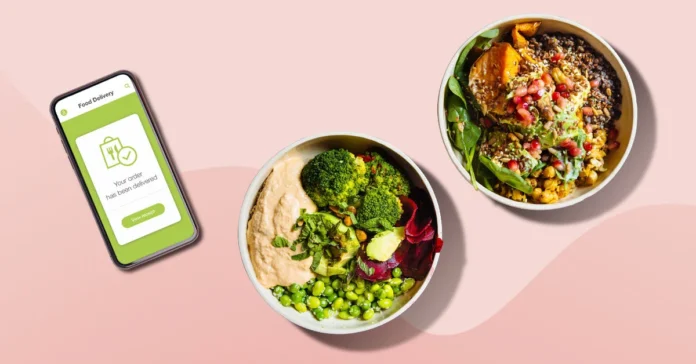Researching and preparing for vegan meals when you are eating out is incredibly important. Being aware of vegan-friendly restaurants and their menus can help you to make informed decisions when choosing a restaurant. Knowing what options they have on their menu can help you make the best decision. Additionally, finding out what items the restaurant is able to modify or substitute can be beneficial as well.
1. Research vegan-friendly restaurants

The first step is to make sure the restaurant has vegan options on its menu. Social media is a great tool for finding out about vegan-friendly restaurants in your area. Search hashtags related to local dining or communities and keep up with their posts. You can also find reviews from other people who have dined at the same establishments.
When researching, take into consideration the type of cuisine offered, pricing, and hours of operation to make sure it suits your needs adequately. Calling ahead is a good way to get additional information that may not be available online about a restaurant’s vegan options and ingredients used in preparation. It’s also important to research any possible allergen cross-contamination risks (i.e., food prepared with egg whites or dairy products) and search for reviews related to staff sensitivity when catering for specific diets or allergies – such as those by vegans, vegetarians, or gluten-free diners.
2. Check menus online

In today’s digital world, it’s easier than ever to do research and find vegan-friendly restaurants. Most restaurants have websites with menus online, so you can see ahead of time exactly what they have to offer. You can also check apps like Happy Cow or Yelp to get the latest reviews and recommendations from other people who have eaten at the restaurant. Once you’ve narrowed down your choices, call the restaurant if you have any questions or special requests.
3. Ask questions
While restaurant staff ought to know all the ingredients of their dishes, some customers forget to check and can end up eating something unintentionally non-vegan. Therefore, ensure that you double-check with staff when ordering your food. Additionally, you could enquire about what cooking methods they use and if there are any vegan options available on the menu.
4. Check ingredients
When eating out, it is important to take extra care and read the ingredients of a dish carefully. If the ingredient list is not provided, look for words on the menu like “butter” or “cream” to help identify animal products that may be used as ingredients. It’s also a good idea to ask your server directly about what dishes on the menu are made with animal-based ingredients.
5. Request substitutions
Even if the menu does not have any vegan items listed, the chef or kitchen may be able to accommodate your dietary needs. First, check for Wawa vegan options, and if there aren’t any, you might want to request for them to hold certain ingredients such as cheese, butter, eggs, and cream so that the dish can be served without these animal by-products. As an alternative, you could also request for them to replace those ingredients with other products such as soy milk, tofu, and vegetable broth. Additionally, many restaurants are able to provide vegetarian protein sources like beans and lentils in dishes instead of meat. By communicating openly with your server or the chef, they can advise you on the best vegan options available at their restaurant.
6. Get Creative with Side Dishes
Many menus have options that can be combined into a satisfying meal even if there’s no single vegan entrée available. Salad bar items like fresh vegetables, beans, and potato salad are often suitable for vegans; sides like steamed vegetables, french fries, or baked potatoes can also make up a substantial meal when paired together on one plate. Just be sure to clarify what type of oil is being used for frying, as many restaurants still use animal products such as cheese or butter in cooking oils and spreads. Remember that almost any dish can become vegan by leaving out items like cheese, eggs, and meat – just ask if adjustments are possible!
7. Leave feedback

Once you’ve finished your meal, it’s important to take the time to leave feedback. Whether your experience was positive or negative, feedback will let the restaurant staff know what people appreciate and what can be done better in the future. Whenever possible, provide specific information about the meal – for example, if the food was flavorful and well-prepared, or if it seemed undercooked or lacked spice.
Your feedback is invaluable and can help improve vegan menu options for everyone. So don’t forget to complete surveys or fill out comment cards that restaurants may offer after your meal. If a restaurant has a website or social media presence, consider leaving additional comments there as well; this lets other people know how they might expect to be treated during their visit.
Finally, don’t forget to mention your experience at the restaurant to friends and family – recommendations are always helpful when considering where you should eat next!
Tips for Dealing with Non-Vegan Friends or Family

Asking non-vegan friends or family to join you can be a challenge. While some of them may be open to vegan fare, others might not be so keen. Here are some tips to help make sure everyone has a good time when you’re out eating together:
-Talk about food allergies: Ask if any of the people in your group have allergies or health restrictions that need to be considered when choosing a restaurant. Once those concerns have been addressed, look for safe options that everyone can enjoy.
-Choose dishes that are familiar: An unfamiliar menu can often be intimidating, so try picking dishes with ingredients or flavors that everyone will recognize and enjoy! You may want to ask the server about vegan substitutes for dishes that contain animal products.
-Educate your group: Letting people know what veganism is all about and showing them examples of delicious vegan foods can help dispel any myths they may have heard and encourage them to try something new!
Conclusion

At the end of the day, veganism is a personal lifestyle choice and it’s important to always prioritize what feels best for you and your health. Eating out as a vegan isn’t as daunting as it may seem — there are so many delicious options to explore. As with any other dietary needs, choose restaurants catering to plant-based cuisine or request modifications from chefs who are willing to accommodate your requirements. With the right attitude and expectations, eating out can be a truly enjoyable experience.









